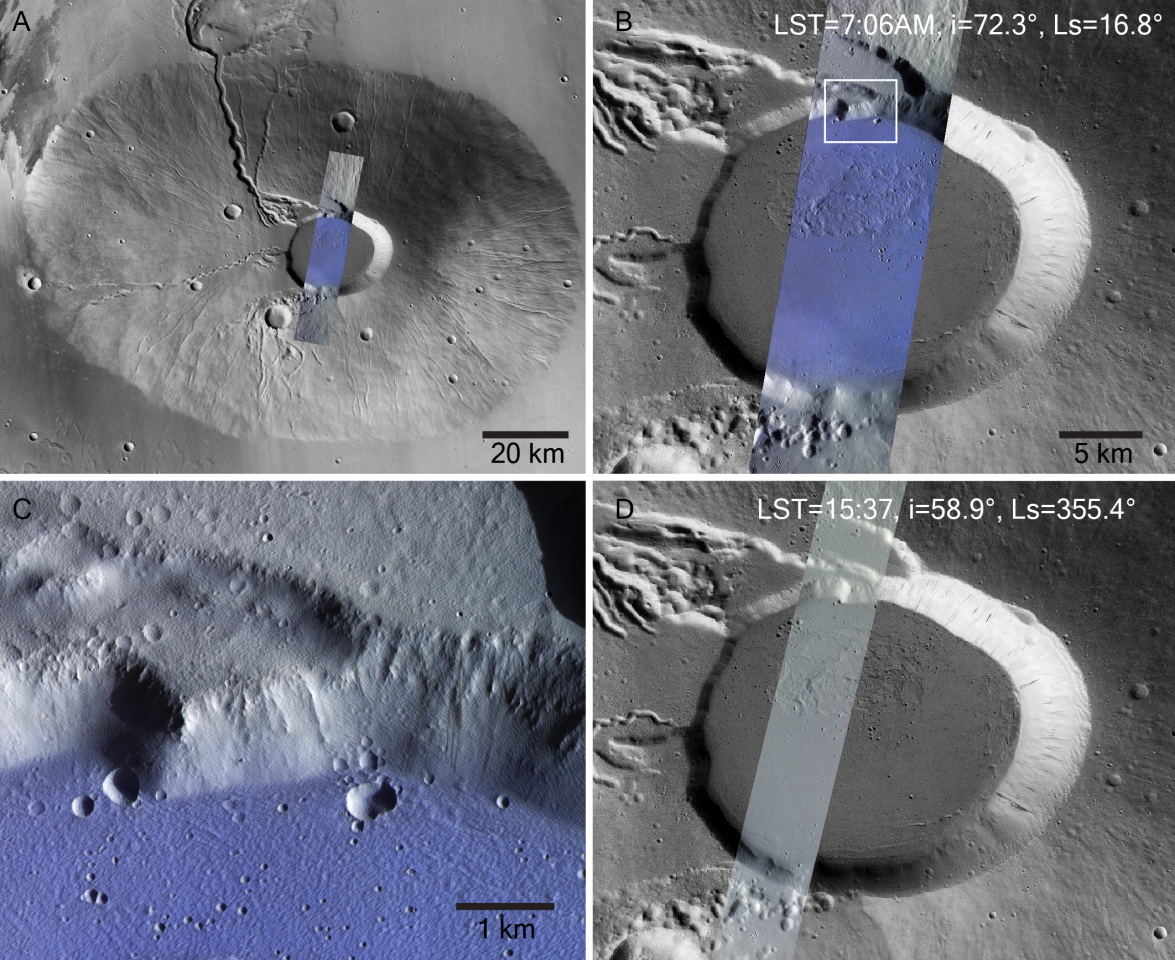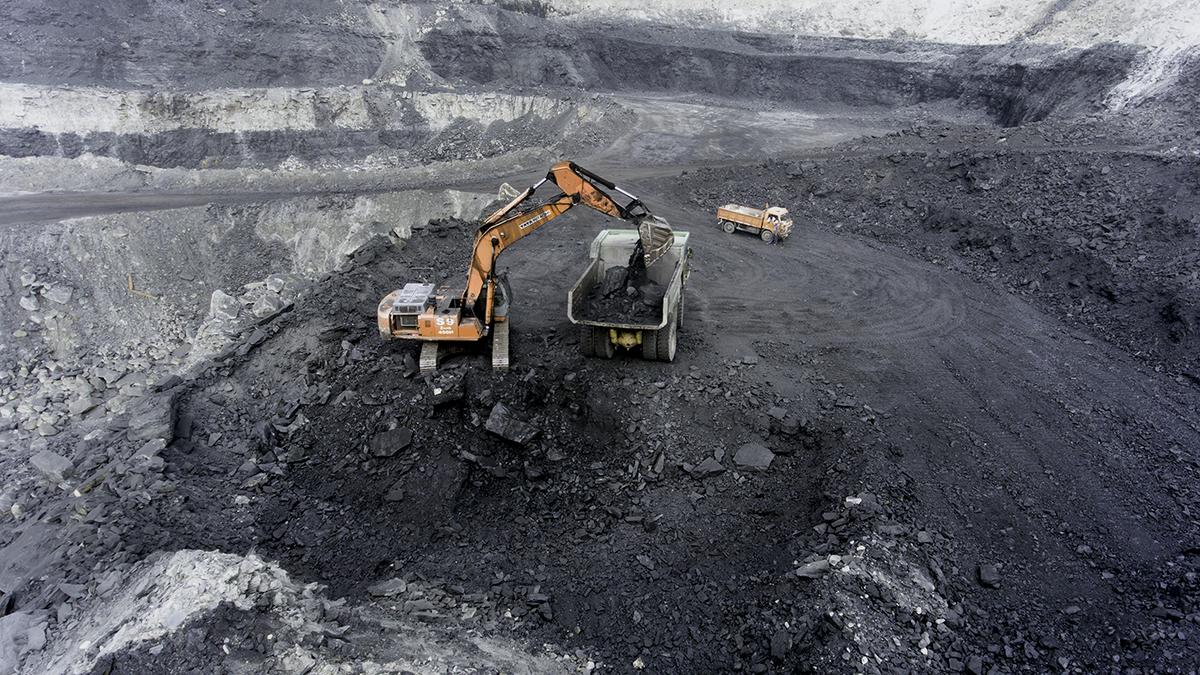Sometimes the impossible turns out to be not so impossible. From satellite data, an international team of scientists has discovered frost forming on top of the tallest volcanic mountains in the solar system on Mars. The snag is that it shouldn’t be there at all.
Frosty mountain tops are a common sight on Earth where peaks often rise above the snow line even in the tropics. They’re not only majestic and even a bit humbling, but can also be a welcoming destination. In the summertime my family spends the hottest days driving to the mountains to walk on the cooling snow fields and we even go snowshoeing well into June.
However, this wasn’t thought possible on Mars. True, frost does appear in the polar regions and there are even ice caps, but in the Tharsis region on the equator this wasn’t thought possible. The volcanoes there include Olympus Mons and the Tharsis Montes made up of Ascraeus, Pavonis, and Arsia Mons. And they may make Mount Everest look like a tiddler, with Olympus Mons soaring to an altitude of 13.6 miles (21.9 km). However, there’s scarcely any water in the extremely thin air and the sunlight was thought to keep the temperature too high for frost to form.
Martian Frost
However, that changed when high resolution images from ESA’s Trace Gas Orbiter combined with readings from the orbiter’s instruments and the agency’s Mars Express spacecraft took a close look. The team, led by Adomas Valantinas, who made the discovery as a PhD student at the University of Bern, Switzerland, found clear evidence of frost forming in the early morning inside the caldera or craters of the 3.5-billion-year-old volcanoes.
According to ESA, the frost has been overlooked until now because it only forms in the coldest months of the Martian year and only during the earliest hours of dawn, while the orbiters are scheduled to do most of their picture taking in the afternoon for the best light. The fact that it all melts and evaporates faster than my bank account is also a factor.
The frost isn’t much. Where on Earth it can, along with other precipitation, accumulate into ice packs hundreds of feet thick, the Martian mountain frost is only about 1/100th of a millimeter thick. However, the total amount is nothing to be sneezed at. It’s estimated to weigh at least 150,000 tonnes, which is enough to fill 60 Olympic-sized swimming pools.
ESA
Why this impossible frost forms is a question of microclimates. Looking up the climate of a region can be deceptive because that’s just a generalization of what the weather’s like. It’s possible to move a few miles or even feet from one spot and suddenly find yourself in a little pocket climate. It’s why travelers to the island of Oahu can turn a corner and suddenly find the lush rainforests becoming an arid desert filled with prickly pear cacti, or a mountain hiker on a sunny spring day can walk into a dark hollow that’s enveloped in freezing cold fog with snow on the ground.
A similar thing happens on the Red Planet, though exactly how is still being worked out with computer models.
“Winds travel up the slopes of the mountains, bringing relatively moist air from near the surface up to higher altitudes, where it condenses and settles as frost,” said Nicolas Thomas, co-leader of the study. “We actually see this happening on Earth and other parts of Mars, with the same phenomenon causing the seasonal Martian Arsia Mons Elongated Cloud. The frost we see atop Mars’s volcanoes appears to settle in the shadowed regions of the calderas especially, where temperatures are colder.”

ESA
This phenomenon is not only important in terms of meteorology, but it could also help to understand many of the mysteries of Mars, including where water might be found on or near the surface, how it moves about, and what the climate was billions of years ago on the planet.
“We thought it was impossible for frost to form around Mars’s equator, as the mix of sunshine and thin atmosphere keeps temperatures relatively high at both surface and mountaintop – unlike what we see on Earth, where you might expect to see frosty peaks,” said Valantinas. “What we’re seeing may be a remnant of an ancient climate cycle on modern Mars, where you had precipitation and maybe even snowfall on these volcanoes in the past. Its existence here is exciting, and hints that there are exceptional processes at play that are allowing frost to form.”
Source: ESA







